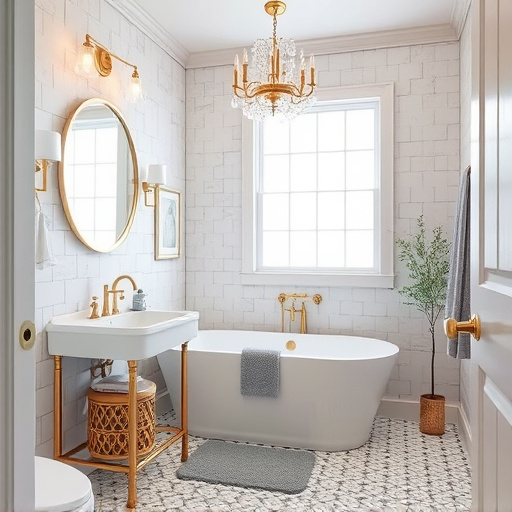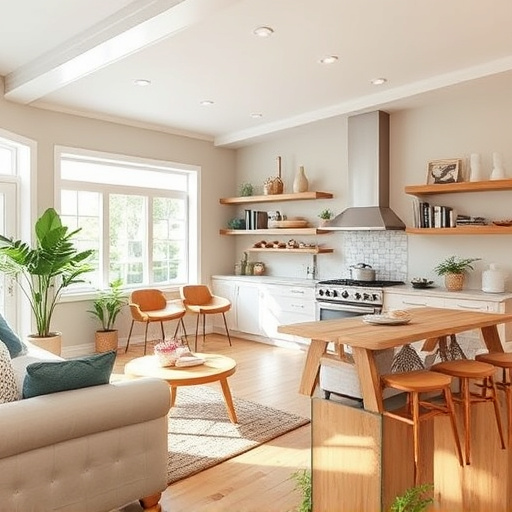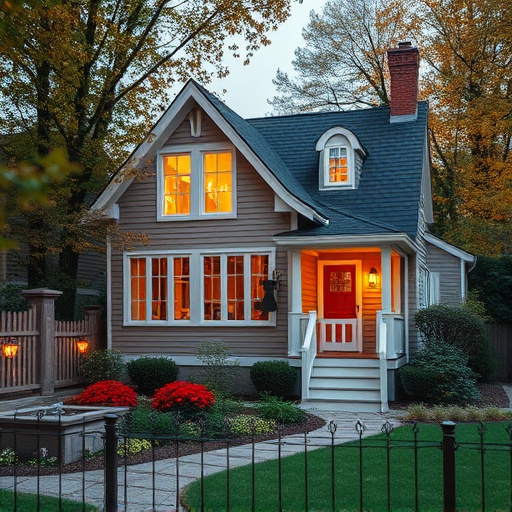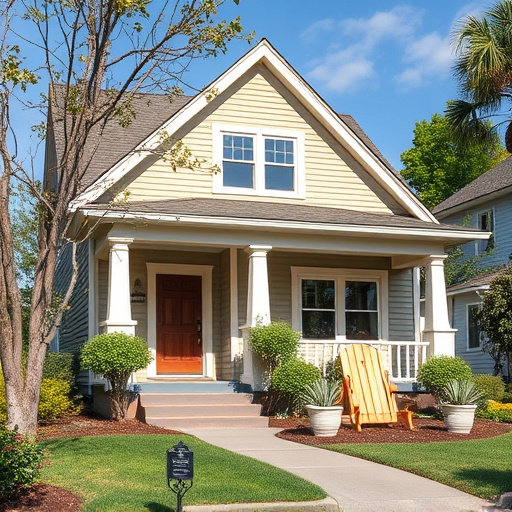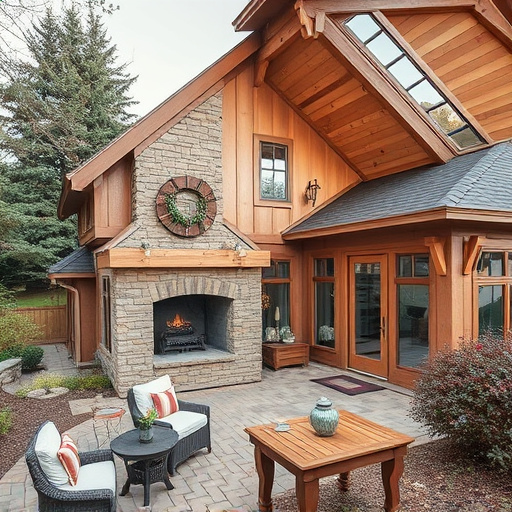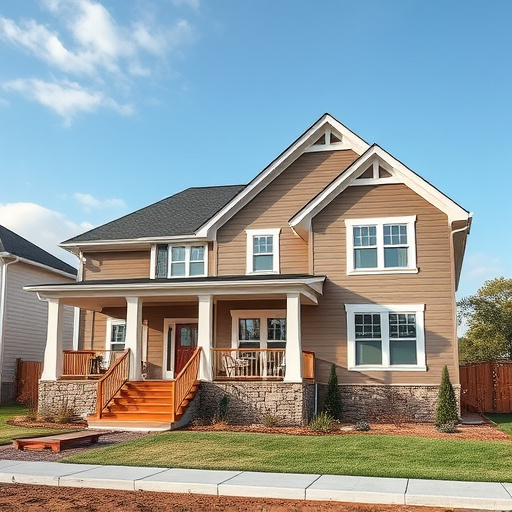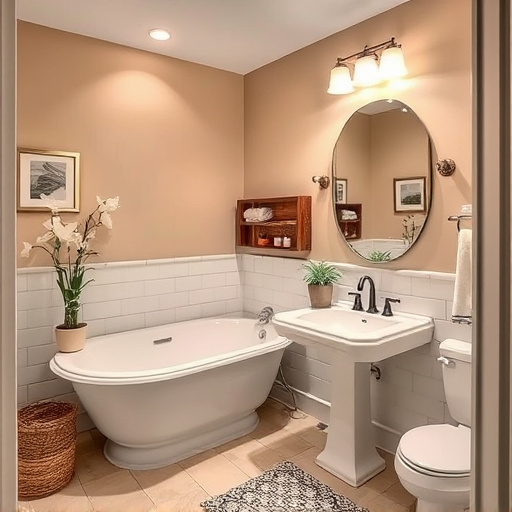Selecting new countertops is a crucial part of kitchen or bath renovations, impacting design and functionality. Choose materials and colors that complement existing flooring and cabinets for a harmonious aesthetic. Consider color theory to balance warm and cool tones for visual appeal. Material selection, like pairing granite with modern wood or marble with dark cabinets, creates cohesive spaces. Complementary interior painting enhances the overall design and user satisfaction.
Looking to transform your kitchen with new countertops? Coordinating flooring and cabinets with your chosen surface is key to a stunning, cohesive design. This comprehensive guide explores how to select countertops that complement your existing aesthetics, utilizing color theory, material insights, and pattern matching. We’ll delve into strategic placement techniques to enhance workflow and visual balance, offering inspiration for both DIYers and professionals. Discover the power of new countertops in redefining your kitchen’s look and feel.
- Choosing Countertops to Complement Flooring and Cabinets
- – Understanding color theory and contrast
- – Material options and their effects on space
Choosing Countertops to Complement Flooring and Cabinets
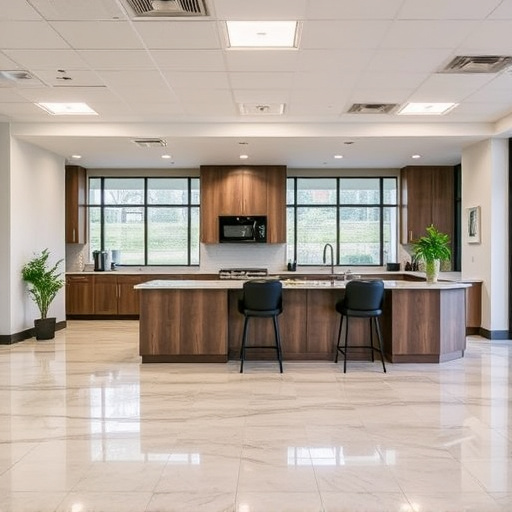
When designing a kitchen or bath renovation, selecting new countertops that complement both flooring and cabinets is essential to creating harmonious, functional spaces. The choice of countertops can greatly impact the overall aesthetic and usability of these areas, making it a crucial decision in any remodeling project.
To achieve a balanced look, consider the materials and colors already present in your flooring and cabinetry. For example, if you have light-toned wood floors and oak cabinets, lighter or neutral-colored countertops like granite or quartz will enhance the bright atmosphere. Conversely, darker floors and cabinets might pair well with deeper-hued stones like marble or soapstone. Customized work is also an option for creating a unique space that reflects your personal style, ensuring your kitchen and bath remain not just updated but truly one-of-a-kind.
– Understanding color theory and contrast
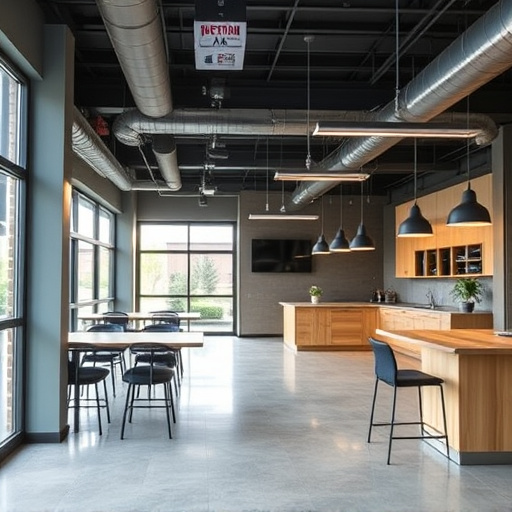
When coordinating flooring and cabinets with new countertops for your home transformations, understanding color theory is key. In interior painting, colors interact in ways that can enhance or diminish one another. For example, warm tones like reds and oranges can create a cozy atmosphere, while cool shades like blues and greens offer a calming effect. When selecting countertops, consider the dominant colors in your space to ensure harmonious combinations.
Contrasting and complementary colors play a significant role in making your kitchen or bathroom stand out. If your floor replacements feature neutral tones, vibrant new countertops can add energy. Conversely, pairing earthy shades with metallic accents creates a sophisticated look. Balancing color choices not only enhances the visual appeal but also ensures that each element complements the others, creating a cohesive interior painting design for your space featuring new countertops.
– Material options and their effects on space
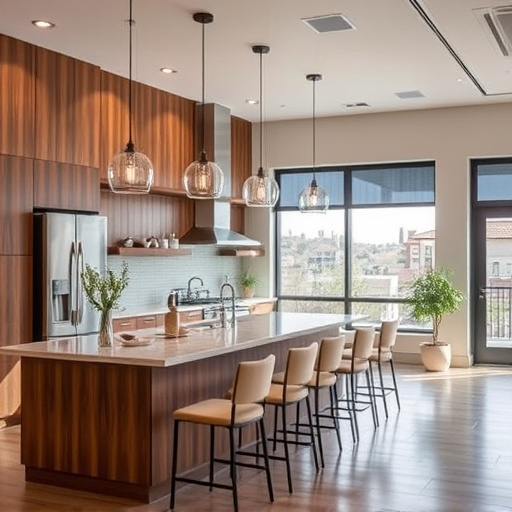
When it comes to coordinating flooring and cabinets with new countertops during a kitchen remodel or home renovation, material choices play a significant role in shaping the space’s aesthetics and functionality. Different materials for countertops offer unique visual appeals and textures that can either complement or clash with existing floors and cabinets. For instance, sleek granite countertops exude elegance and durability, creating a timeless look when paired with modern wood flooring and stainless steel cabinets. Conversely, marble offers a softer, more organic aesthetic, which can be beautifully juxtaposed against dark wooden cabinets and tile flooring for a warm, inviting kitchen.
In terms of interior painting, selecting colors that echo the warmth or coolness of your countertop material can create harmony throughout the space. Cool-toned countertops like quartz or marble can be balanced with calming paint shades, while warmer materials such as granite or natural wood tones benefit from richer, deeper hues. This attention to detail ensures a cohesive kitchen design that not only enhances the overall beauty but also contributes to the comfort and satisfaction of those who use it, making your home renovation truly worthwhile.
When coordinating flooring and cabinets with new countertops, understanding color theory and material choices is key. By considering contrasting colors and textures, you can enhance the overall aesthetic of your kitchen or bathroom. Whether opting for natural stone, wood, or man-made materials, each offers unique benefits in terms of durability and design versatility. With the right approach, you can transform your space into a harmonious blend where new countertops serve as the centerpiece, complementing both the flooring and cabinets to create a captivating and functional environment.








